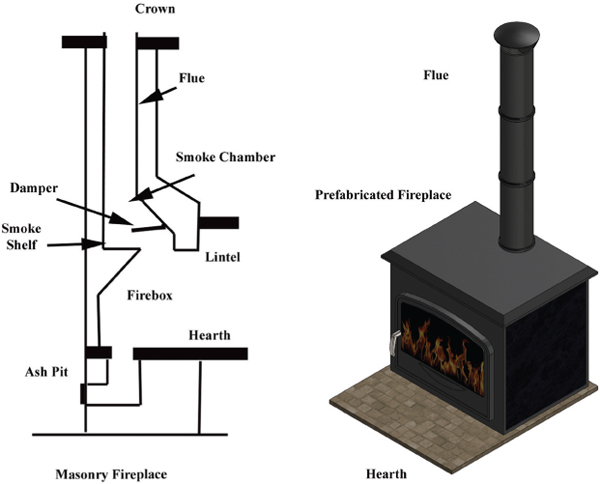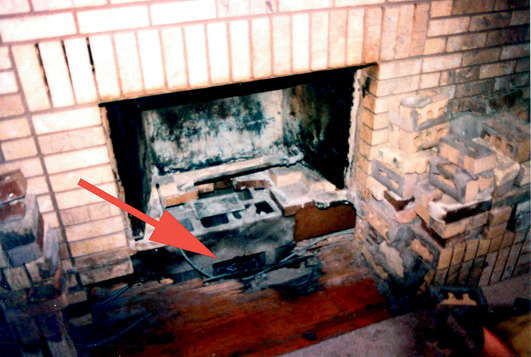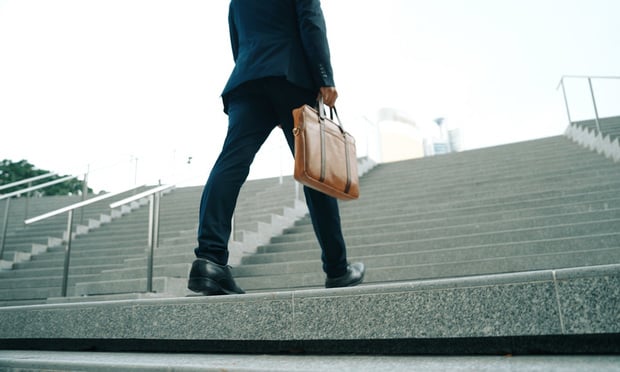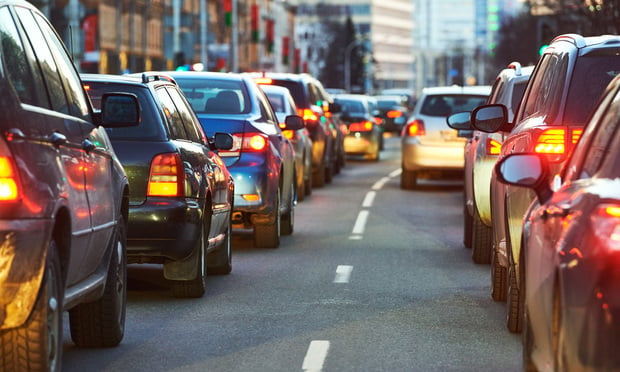The season for fireplace usage has arrived, along with the cascade of claims originating from them. Fireplace blazes have many causes, but this article deals with those originating in and around the enclosure encompassing the firebox. Figure 1 is a simplified drawing of the two general types of fireplaces: the masonry fireplace and the prefabricated fireplace.
Masonry fireplaces are custom-built for a particular home and must be supported properly, as the masonry may weigh several thousand pounds. Prefabricated fireplaces are popular because of the reduced expense and additional features provided, such as forced air heat recovery systems. The following case studies illustrate some of the causes of fires in and around the firebox enclosure area.

Figure 1
Figure 2 is a view of a masonry fireplace involved in a home fire loss. Burn patterns suggest a fire origin to the left of the fireplace (refer to the arrow), where a gap in the masonry liner of the firebox was discovered. Over time, hot gases from the fire dried out the wood framing, lowering the ignition temperature of the wood (pyrophoric decomposition of wood), thus starting a fire. This was a result of insufficient mortar in a joint. This type of fire causation can occur with a newly constructed fireplace or an older one, with the governing factor being the frequency and severity of impingement of hot gases on the wood framing.

Figure 2
Figure 3 shows a masonry fireplace after a fire that badly damaged the framing behind the masonry, above the lintel. Burn pattern analysis indicated the fire origin was in the framing behind the brickwork (as shown by the arrow), with the fire developing upward into the second floor framing. Investigators discovered a construction defect: the seal between the firebox and lintel was non-existent and thus allowed hot gases to escape upward into the framing cavity above.

Figure 3
Figure 4 is a view of a masonry fireplace in an older home where the fireplace was rarely used by the previous owner. The new owners started using the fireplace extensively, and it was not long before a blaze developed in the framing under the hearth. The owner had shoveled hot ash through the ash door, down into the ash pit. Investigation of the ash pit later revealed there was no ash dump below, but merely the concrete block used to support the fireplace. There was no cleanout door inside or outside the home. The hot ash had piled up, eventually igniting the wood framework nearby. The adjuster should note that the improper ash pit is clearly a construction defect.

Figure 4
In Figure 5, damage to the fireplace and home results from over- fueling the fireplace (too much wood). The condition was aggravated by the lack of a protective screen, resulting in heat transfer to combustible materials, causing fire. This is a misuse of the fireplace.

Figure 5
Masonry fireplaces may weigh several tons, requiring a solid foundation. In Figure 6, settling of the foundation of a newly constructed fireplace caused a severe crack to propagate into the firebox area, exposing wood framing to high temperatures, resulting in a fire. The root cause is improper construction of the foundation, which was not sufficient to support the weight of the fireplace.

Figure 6
In Figure 7, a fire origin was discovered around a natural gas valve used to control the burner in the fireplace. Testing indicated the gas valve stem seal was leaking gas, which eventually ignited, causing a fire in the framing next to the fireplace. It should be noted that when the valve was shut, the stem seal was not exposed to gas. Consequently, an explosion did not result from leaking gas. The stem seal only leaked when the valve was turned on. An improperly installed stem seal was found to be the cause of leakage.

Figure 7
Figure 8 shows a prefabricated fireplace that was nearly covered with cellulose insulation prior to the fire. The insulation caused a high firebox temperature, resulting in the ignition of either the cellulose insulation or the neighboring wood chase framing. It should be noted that fire retardants are normally applied to cellulose insulation, but that still burns under certain conditions. The manufacturer of the prefabricated fireplace requires air flow around the firebox for proper operation. In this case, improper application of insulation caused the fire (an installation defect).

Figure 8
Figure 9 shows the insulation blanket wrapped around the lower flue on a prefabricated fireplace. A repairman was adjusting the clamps at the base of the flue and completed the work without restoring the thermal insulation blanket around the base of the flue. The large opening in the insulation (see arrow) allowed sufficient heat transfer to ignite construction debris on top of the firebox, causing a blaze. Therefore, improper workmanship was the underlying cause of the fire in this case.

Figure 9
These case studies all serve to illustrate the variety of fire causes that occur at or around the firebox of fireplaces. If subrogation is contemplated, it is customary to notify potential parties to inspect the scene, prior to evidence removal, in order to avoid spoliation claims. If subrogation is not contemplated, then it may be necessary to retain evidence in case others do decide to subrogate.
Want to continue reading?
Become a Free PropertyCasualty360 Digital Reader
Your access to unlimited PropertyCasualty360 content isn’t changing.
Once you are an ALM digital member, you’ll receive:
- Breaking insurance news and analysis, on-site and via our newsletters and custom alerts
- Weekly Insurance Speak podcast featuring exclusive interviews with industry leaders
- Educational webcasts, white papers, and ebooks from industry thought leaders
- Critical converage of the employee benefits and financial advisory markets on our other ALM sites, BenefitsPRO and ThinkAdvisor
Already have an account? Sign In Now
© 2025 ALM Global, LLC, All Rights Reserved. Request academic re-use from www.copyright.com. All other uses, submit a request to [email protected]. For more information visit Asset & Logo Licensing.








